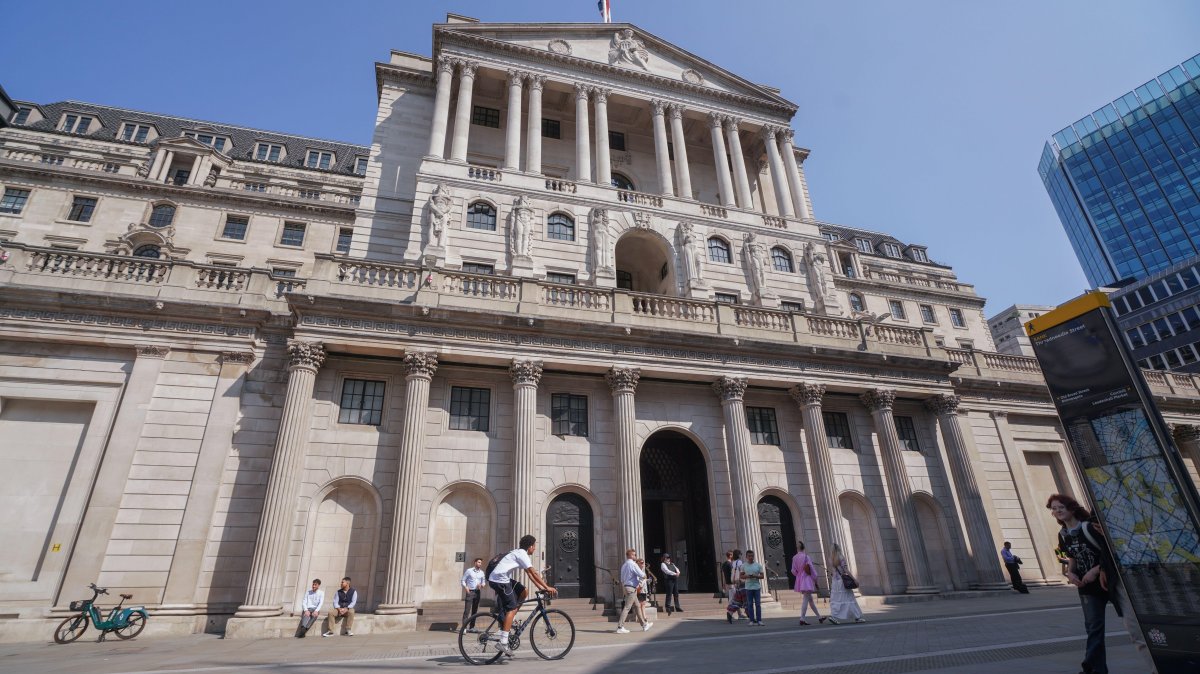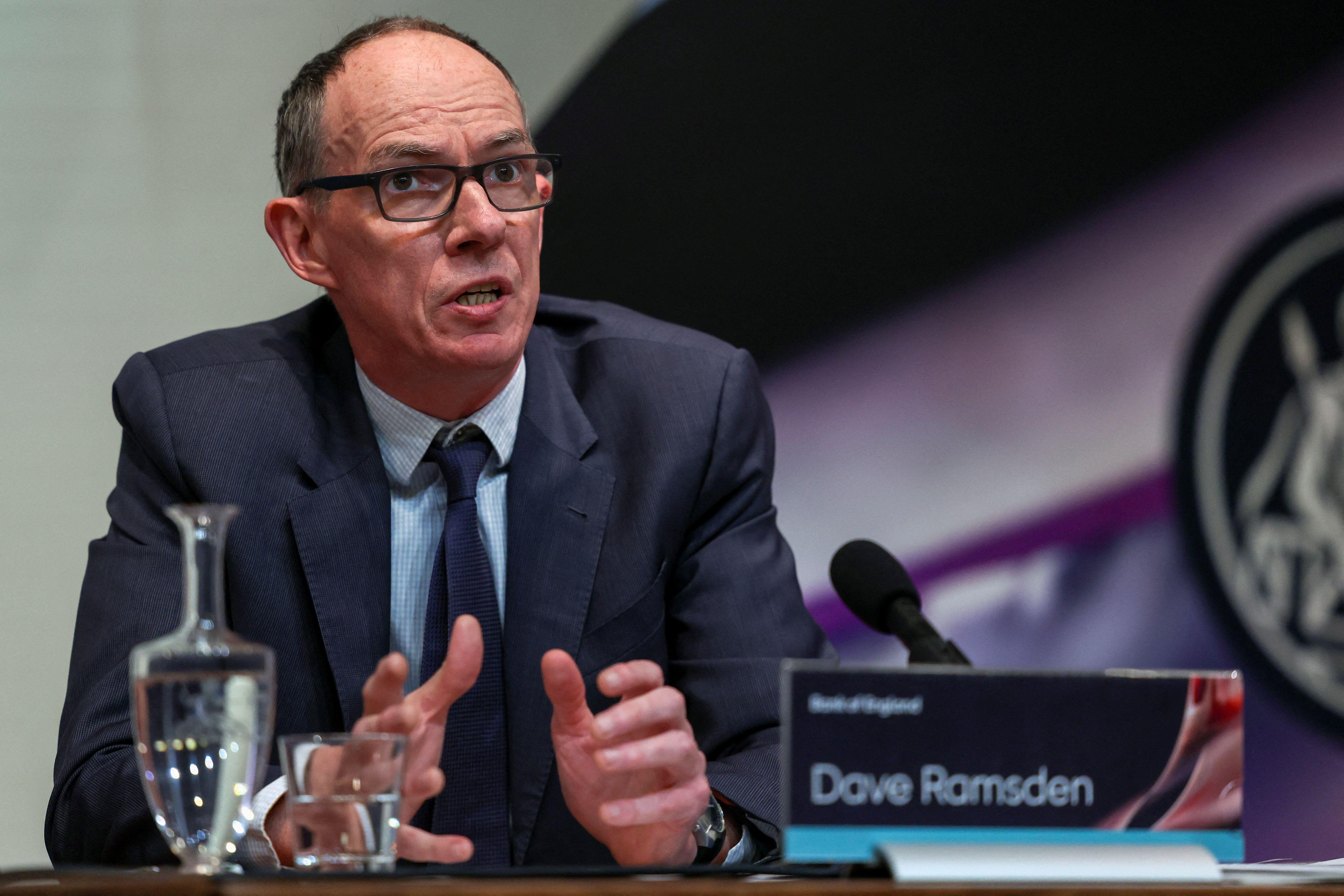The Bank of England missed the party on Thursday when it announced that interest rates would hold steady at 4.25 per cent.
On a day littered with monetary policy announcements across Europe, it was the only major central bank to sit tight. Switzerland’s central bank cut rates by a quarter point. Sweden’s did the same, as did Norway’s.
In the UK, the monetary policy committee was not for turning and stuck to the script: markets expected rates to be held and the Bank of England duly delivered.
However, that the committee voted 6-3 in favour of leaving rates unchanged did somewhat upset the apple cart. Analysts projected a 7-2 vote split.
Dave Ramsden, a deputy governor, broke from the centre ground on the MPC and voted alongside Swati Dhingra and Alan Taylor — external committee members who have repeatedly voted for frequent and larger cuts — for a 0.25 percentage point reduction.
Rate-setters are divided by the “two-sided” inflation risk currently hanging over the UK economy. For some of the six MPC members who voted to hold in June — most likely to have been the Bank’s chief economist Huw Pill and Catherine Mann, an external member — poor productivity growth, structural change in the labour market and rising food prices all mean that inflation will remain stubborn, requiring borrowing costs to fall at a snail’s pace.
For Dhingra, Taylor and Ramsden, the latest market figures from the Office for National Statistics — which showed the largest decline in payrolled employment since the start of the pandemic — demonstrated that policy must loosen immediately or inflation would eventually end up below the Bank of England’s 2 per cent target.
Then there are the MPC moderates, who see the rationale of both of these arguments but do not ardently adhere to either. This group most likely includes the governor, Andrew Bailey, deputy governors Sarah Breeden and Clare Lombardelli and the external member Megan Greene. It did include Ramsden before Thursday’s MPC meeting.
The fact that Ramsden shifted from the majority vote to a cut in June after one set of downbeat labour market figures illustrated that it will not take much for others to change tack if incoming data is worrisome.
The mood music among City analysts after the rate announcement was hopeful for cuts — eventually.
Nomura, the Japanese investment bank, said: “The fact that we now go into the August meeting with three members wanting a cut makes a 0.25 percentage move next month very likely.”
Matt Swannell, chief economic adviser to the EY Item Club, a forecaster, said: “There was no explicit promise of an August cut, but the admission that the labour market was starting to loosen will make it even more likely that the Bank of England sticks to its routine of cutting at every other meeting when it gets together in August.”
Michael Metcalfe, head of macro strategy at State Street Markets, an investment firm, summed it up tightly: “August now looks odds-on.”
Unsurprisingly, the Bank maintained its “gradual and careful” phrase in its monetary policy statement to try to stop analysts from getting carried away. The MPC has deployed this phrasing in some form since the group started lowering rates in August from their 5.25 per cent peak.
It has been taken as code to signal that the MPC will lower rates at every other meeting. On that basis, quarter-point cuts should occur in August and November, bringing rates down to 3.75 per cent before the end of the year, their lowest level since January 2023.
Broadly speaking, analysts think that the MPC will eventually usher rates down to somewhere between 3 per cent and 3.5 per cent by mid 2026 and leave them there over the long term.
It is easy to forget sometimes what the Bank of England’s main task is: keep inflation at 2 per cent over the medium term.
Dave Ramsden, the Bank’s deputy governor, changed tack when voting for a rate reduction
ALAMY
When measured against that barometer, then rapid rate cuts should be off the table entirely. The MPC said on Thursday that inflation would remain stuck at about 3.5 per cent for the rest of this year. Figures from the ONS this week showed that inflation edged down to 3.4 per cent in May from 3.5 per cent in the previous month.
The risk of inflation exceeding the Bank’s already troubling forecast is mounting. Oil prices have risen sharply in response to the escalating conflict between Iran and Israel. Businesses have warned of price rises to cope with the £25 billion increase in employers’ national insurance contributions. Wage growth is elevated at over 5 per cent. Food inflation is back up to its highest level in over a year.
The final make-up of President Trump’s tariff policies is anybody’s guess. A 90-day pause to his “reciprocal tariffs” is due to end next month. If US trade policy ends up being ultra protectionist, then Britain could benefit from lower import prices as countries in Asia divert goods originally bound for the US to Europe. A thin US-UK trade agreement took the sting out of Trump’s tariffs on British exports.
There are already signs in recent data that demonstrate the economy’s weakness, of which the Bank will be mindful. GDP contracted by 0.3 per cent in April and growth is likely to be sluggish this year at just over 1 per cent.
Crucially the labour market is on the verge of souring, something that the MPC has persistently said is a requirement for further policy loosening. In fact, the committee noted this development several times in the minutes from its June meeting, also publicised on Thursday.
The most important line in the MPC statement was perhaps: “Underlying UK GDP growth appears to have remained weak, and the labour market has continued to loosen, leading to clearer signs that a margin of slack has opened up over time.”
If that dynamic continues, it would give the green light for two more rate cuts before the end of the year.

